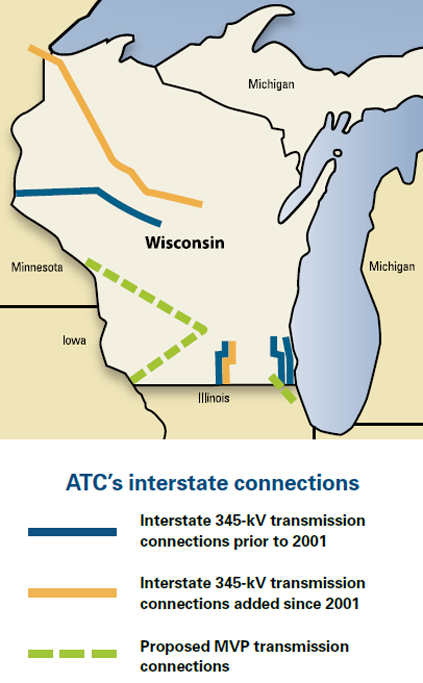Our progress
 Our long-term access initiative, launched in 2005, has demonstrated that reliability projects have significant economic benefits as well. Locational marginal prices in our service territory are now aligned with those in neighboring hubs. When we began operations in 2001, our interconnections with other states were used to import power. With the increased connections to neighboring transmission facilities, our customers now have the opportunity to export power when it is economically desirable to do so.
Our long-term access initiative, launched in 2005, has demonstrated that reliability projects have significant economic benefits as well. Locational marginal prices in our service territory are now aligned with those in neighboring hubs. When we began operations in 2001, our interconnections with other states were used to import power. With the increased connections to neighboring transmission facilities, our customers now have the opportunity to export power when it is economically desirable to do so.
We have invested $2.7 billion in improvements that have enhanced system reliability in the last 11 years. Increasingly, we see those investments reflecting the trend toward more regional planning that improves broader-area reliability and strengthens the bulk electric markets. Even with this considerable investment, transmission cost remains the smallest component of a retail customer’s electric bill – about 8 percent in our case. (Retail customers pay for the generation, transmission and distribution of electricity, plus fuel costs, through regulated utility rates. Generation and fuel make up the major portion of the bill, followed by distribution infrastructure.)
Effective management of existing assets complements our planning strategy for maintaining and improving reliability. Equipment life cycles and replacement plans are driven by safety, regulatory compliance, reliability performance and environmental stewardship.
Our asset management personnel have maintained top-tier reliability performance while managing a robust construction program. Our 115‑kV, 138‑kV and 345‑kV lines operated in the top 10 percent for reliability performance in 2011, when benchmarked against 24 transmission entities. Our 69‑kV lines were in the top 25 percent. While our facilities are performing well, targeted investment is needed to maintain reliability.
